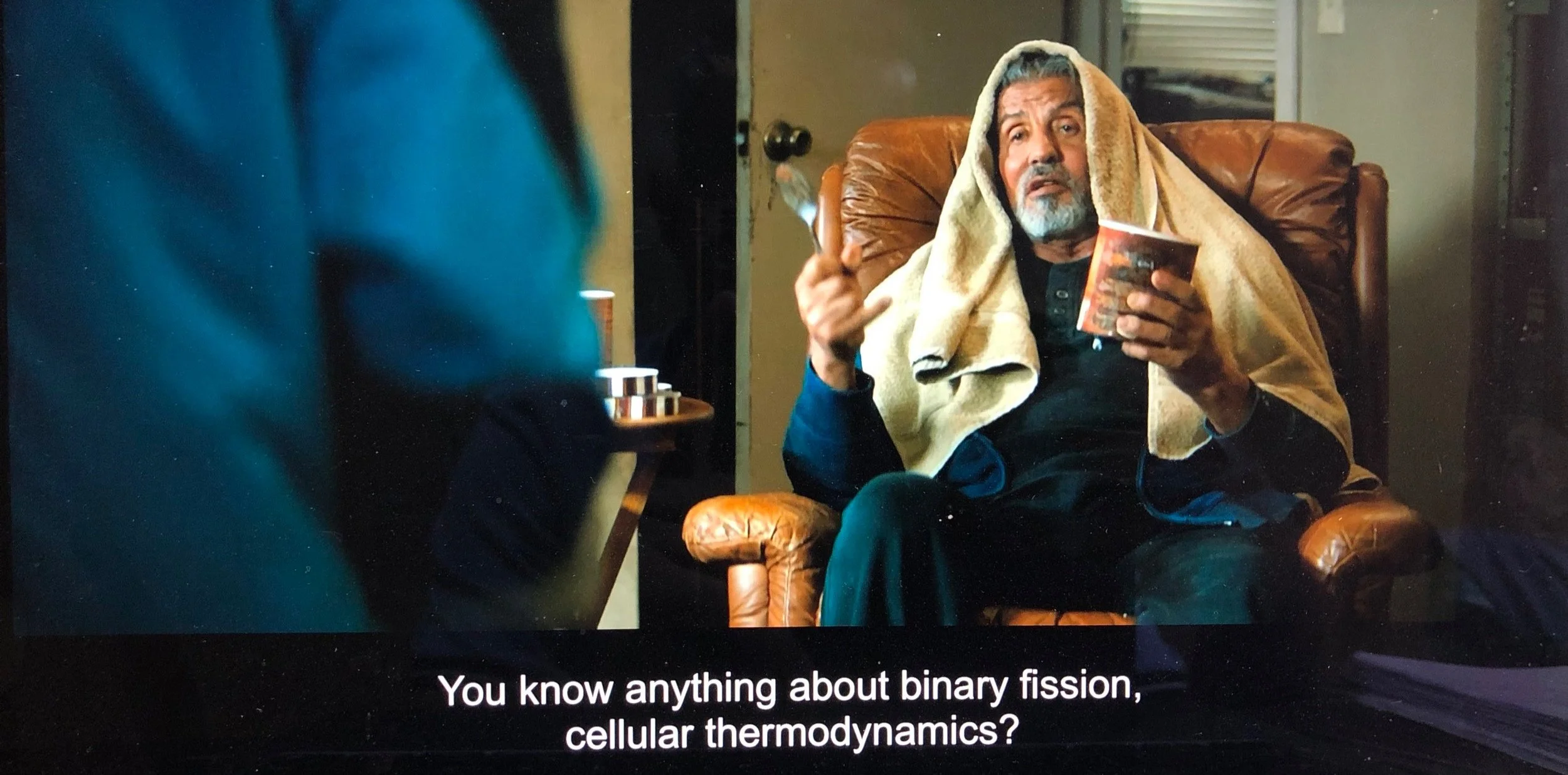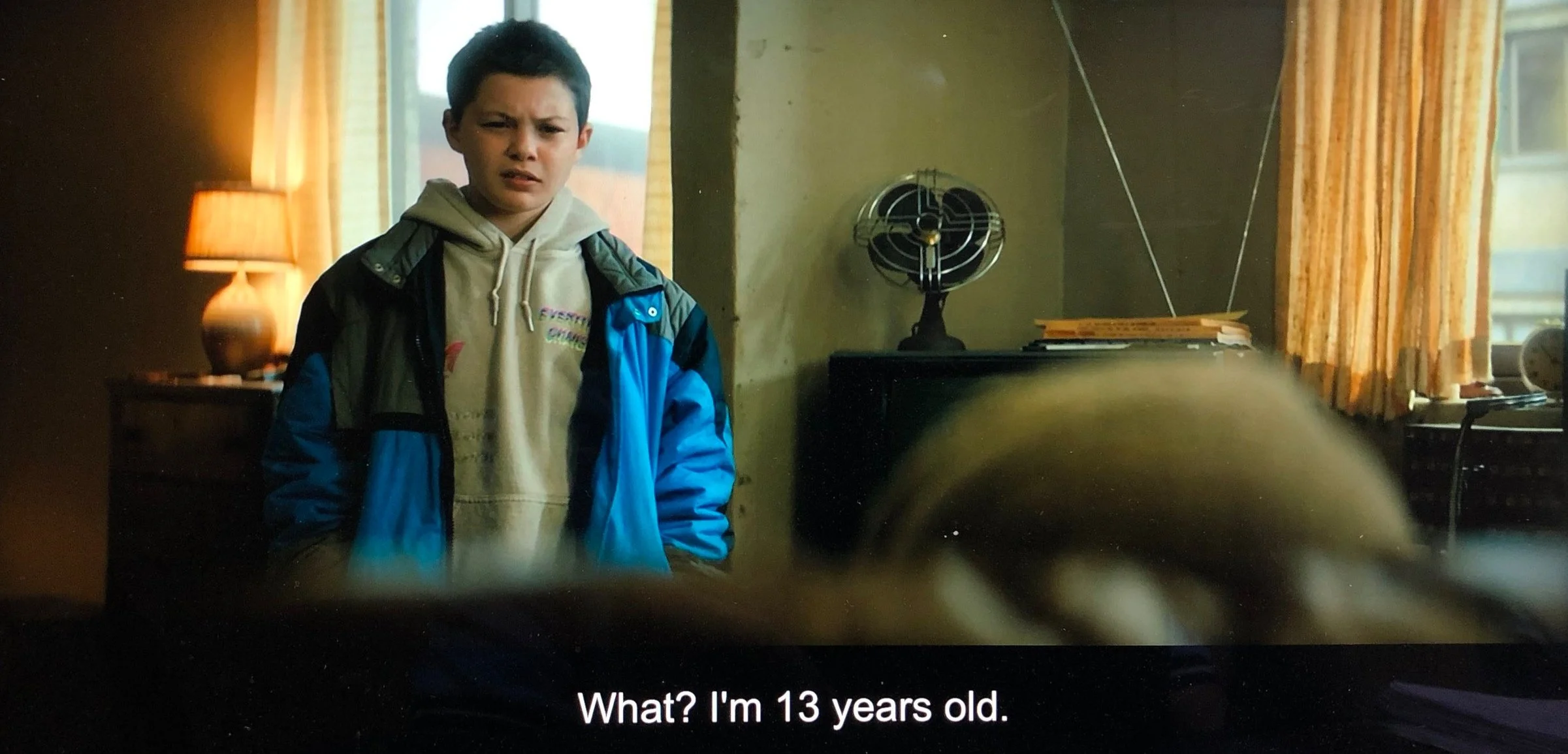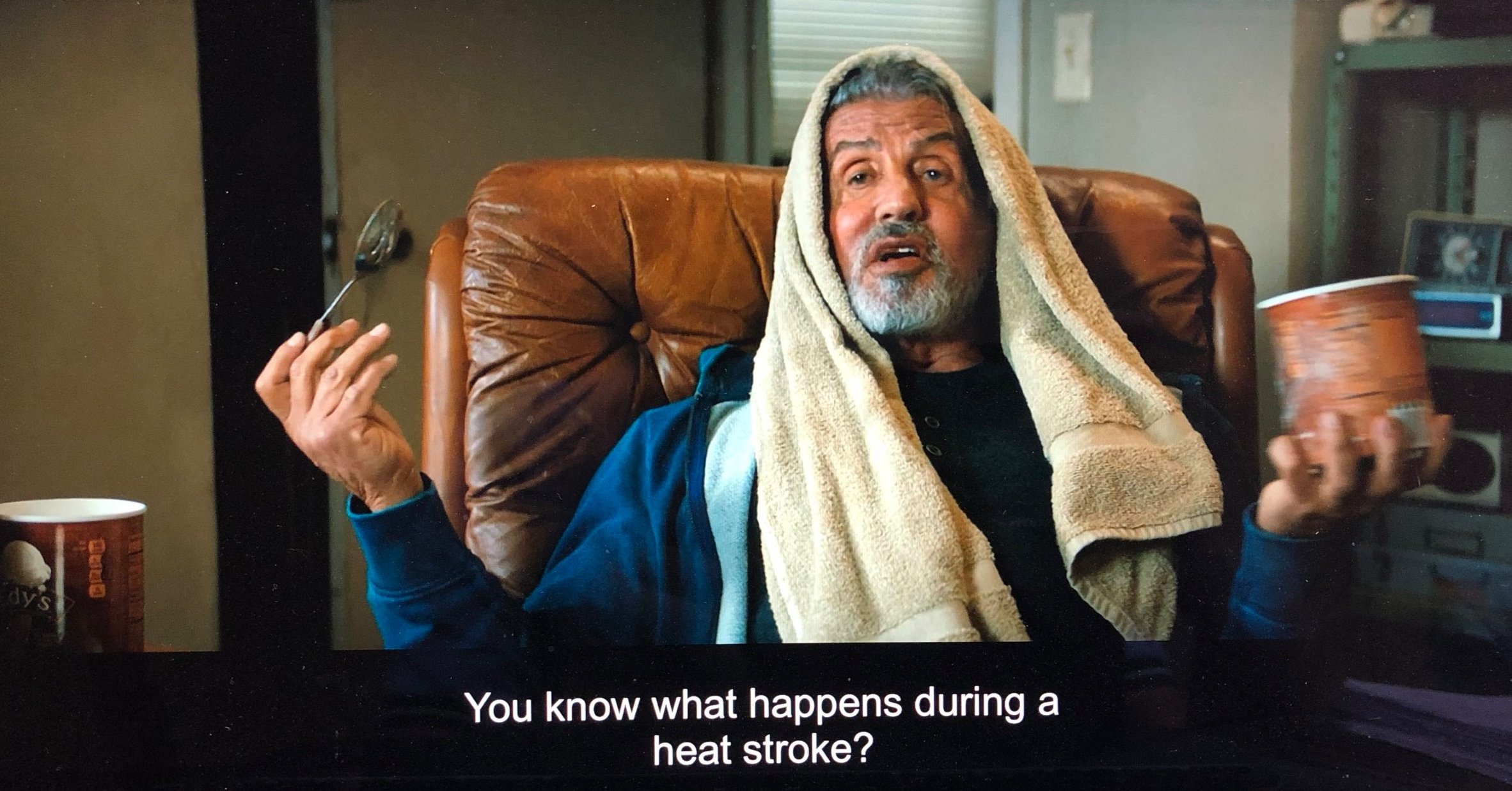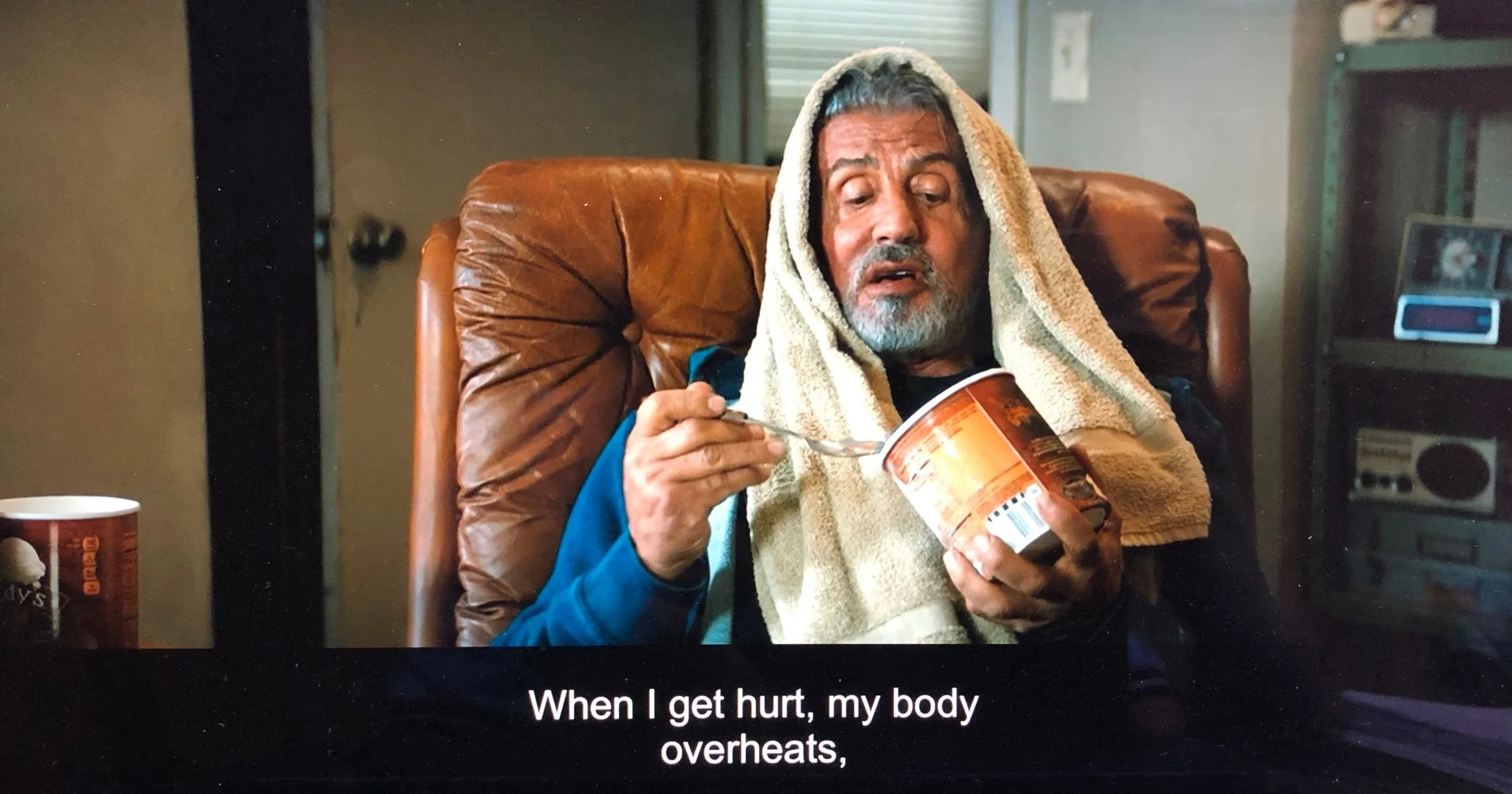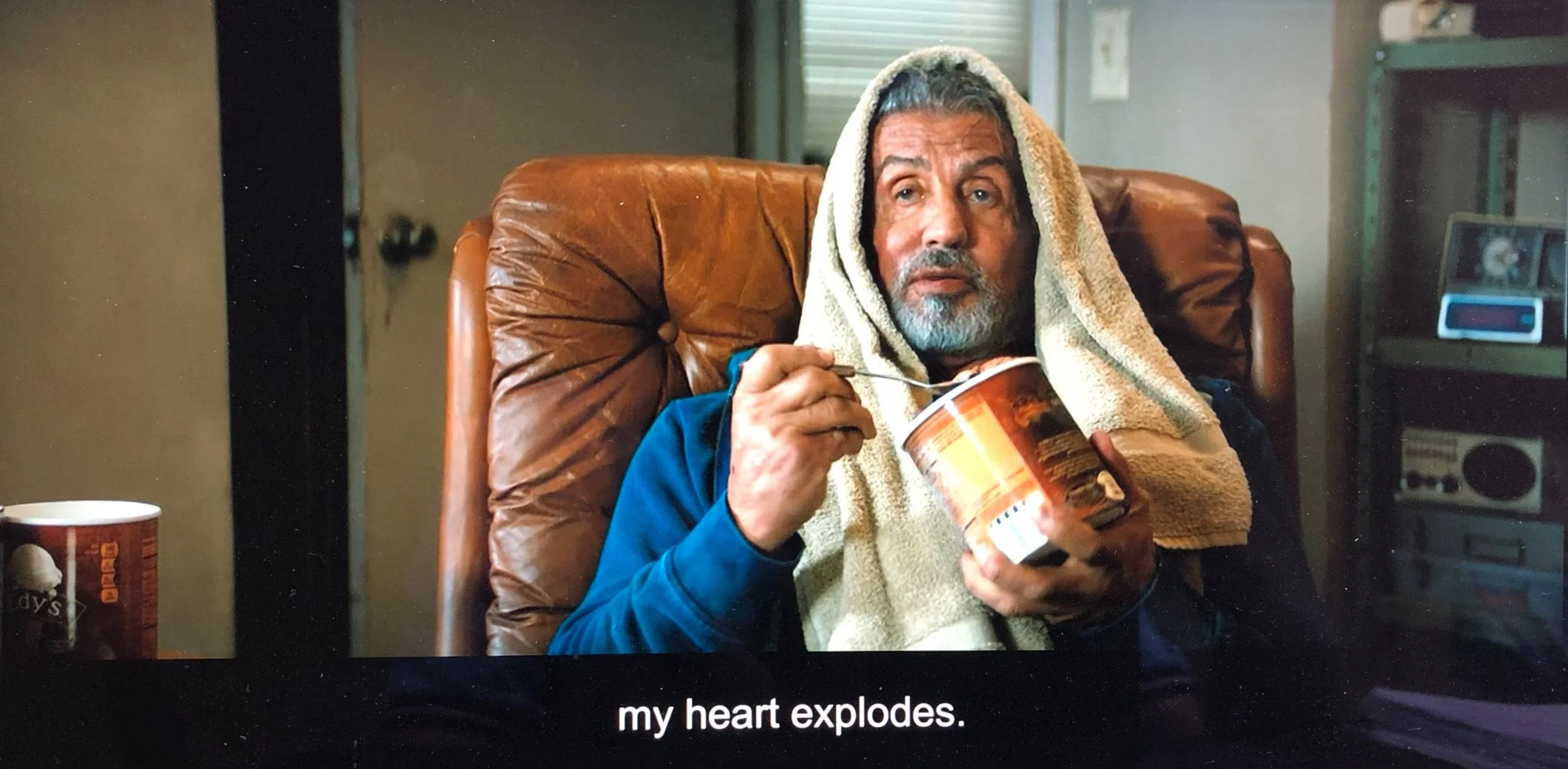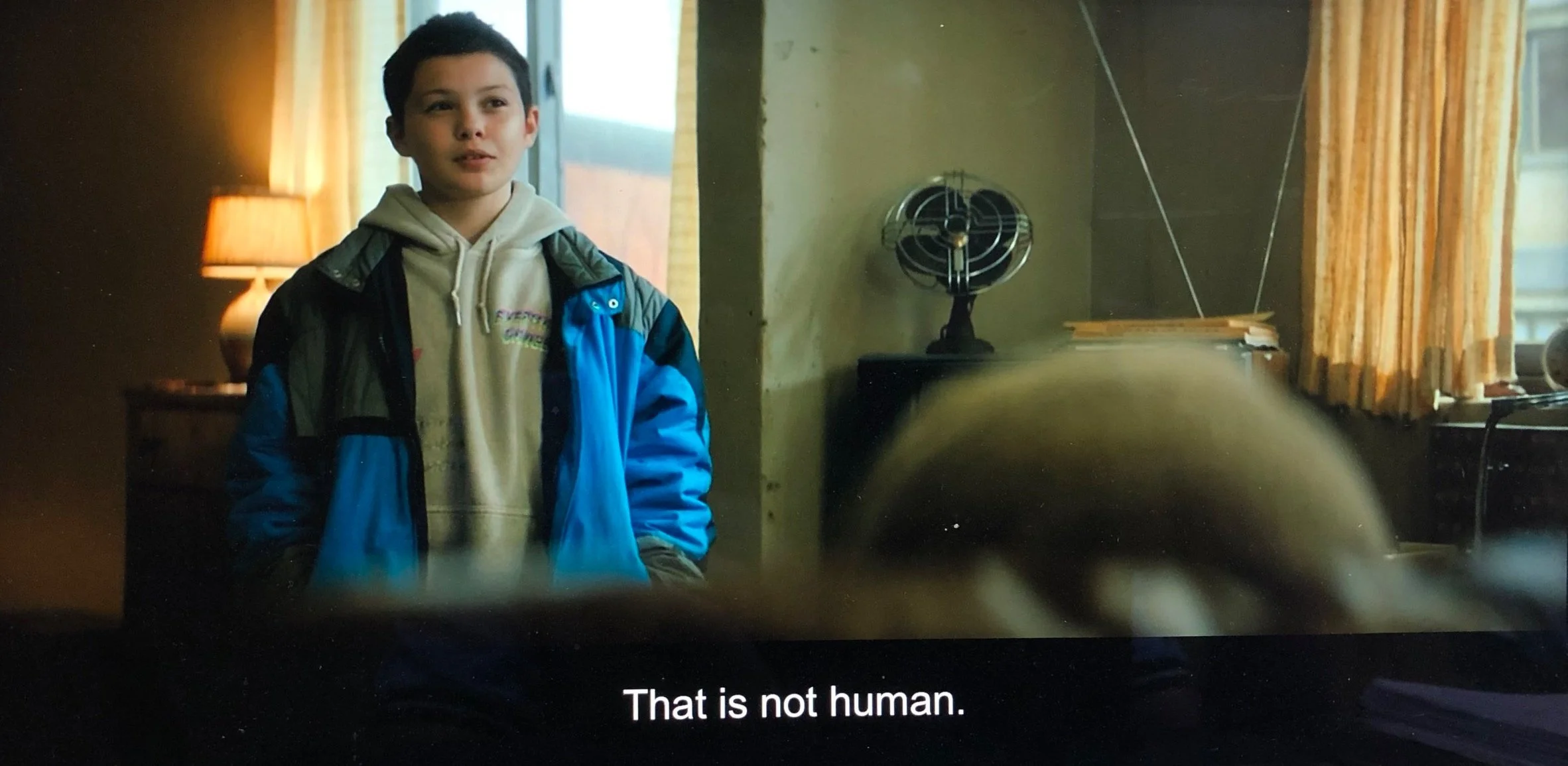The do's and don'ts of exercising on a hot day
I’ve started a weekly column in Hindustan Times Premium titled The Art & Science of Fitness, I lovingly call ARSE of Fitness. I'll put it on my blog here only after 4 weeks.
In school I was a back bencher myself. So I first need to make sense to myself. So trust me, it’ll make sense to you too. (Still from Samaritan, starring Sylvester Stallone, now streaming on Prime Video.)
First appeared in Hindustan Times Premium on 12th August 2022
〰️
First appeared in Hindustan Times Premium on 12th August 2022 〰️
“On a hot summer day on a long slow run, my body began to heat up. Had I not known what to do in those circumstances, things could have taken a turn for the worse. Here’s what I did.”
Exercising and playing in hot and humid conditions, for as little as 30 minutes, can quickly take a turn for the worse. Exertional heatstroke happens to be one of the top reasons for sudden death in sport, but unlike other conditions, it’s both easily preventable and treatable even by non-medics — if they are aware of some fundamentals. Unfortunately, most event organisers and coaches don’t have a clue about this. No, gulping down gallons of plain water isn’t the solution. It makes the situation worse.
Still from Samaritan, starring Sylvester Stallone, now streaming on Prime Video.
A decade ago, on a hot summer Sunday on my long slow run, I started to sweat from the first kilometre and my t-shirt and shorts were soaking wet by the second. Nothing extraordinary here, as most of you will probably relate to this in current weather conditions. After about three hours, I hit Rajpath (the road between Rashtrapati Bhavan and India Gate) and the sun was shining in all its glory, as if there was no tomorrow. The temperature had snuck up to about 30°C, which didn’t seem like a big deal, but with 80% relative humidity, it felt like 40°C. I wasn’t tired and there were no aches or pains, or at least that’s what I thought. Suddenly, out of the blue, I had the urge to sleep. It baffled me.
Rather than continue running, I headed towards one of the trees lined up the lawns on both sides of Rajpath. I lay down on a bench under the tree. It seemed as if someone had switched on the air conditioner, as temperatures seemed to have dipped by 10°C.
Still from Samaritan, starring Sylvester Stallone, now streaming on Prime Video.
Now, this could have easily been disastrous, had I not stopped. More so for those who are not accustomed to exerting themselves by playing sports or exercising in these conditions. And if your fitness levels aren't good, these are just the wrong weather conditions to have an epiphany to discover your fitter self. When it’s extremely hot, it’s best to stay indoors and focus on strength and conditioning, so that you are better prepared when you do decide to exercise outdoors.
It’s interesting to note that the mechanical efficiency of us humans is ≤30%. As soon as we start exercising or playing sport, our contracting muscles waste a lot of energy by producing large amounts of heat. We release that heat through sweat. When the ambient air temperature is lower than the body, the sweat evaporates and cools the body down. And it's all good.
Still from Samaritan, starring Sylvester Stallone, now streaming on Prime Video.
But when air temperature and humidity make the temperature feel higher than that of our bodies — ie more than 37°C — the sweat doesn’t evaporate, but drips. Sweating effectively fails to keep us cool, and as a result, it heats us up further. Soon, your t-shirt will be soaking wet — much like the way it was for me on that fateful day. Also, if we are pushing too hard, it makes the situation even worse. Some of us — who are adamant to carry on exerting ourselves because of being excessively motivated, due to peer pressure, or because of a rookie coach pushing us too much — start experiencing confusion and excessive aggressiveness that doesn’t match our character.
To cool down, our body again tries to sweat even more, leading to an increase in skin blood flow, compromising on the blood flowing to the vital organs such as the heart and brain, putting us at risk of multi-organ failure. This overheats our body if we don’t quickly stop, reduce the intensity of exercise, and rapidly bring the core body temperature down, along with pouring copious amounts of cold water on our face, head and all over the body, consuming cold fluids and immersing the whole body in ice cold water. The simple act of pouring cold water on your face and drinking ice cold water quickly sends blood flowing back to your core and maintains the crucial oxygen supply to your gut, heart and brain, reducing the body’s core temperature.
Still from Samaritan, starring Sylvester Stallone, now streaming on Prime Video.
The very basic thing is that we need to match our levels of physical exertion in hot and humid conditions to no more than our current physical fitness. What helped me that day was that I had been running for the last 27 years (now, 37) and I am used to running in hot conditions. Usually one of the earliest signs of heat illness is confusion and lack of appropriate decision-making. Luckily, I was still in my senses to put my ego aside to decide mid-run to stop and lie down under a tree.
Even if we are fit, during summers, it is important to avoid peak hot times and wind up our runs latest by 7-7:30 am when temperatures are still reasonable and the sun is not going nuts. In any case, we need to acclimatise to exercising in the heat if we are going to be participating in an event while we are unaccustomed to hot and humid conditions.
Still from Samaritan, starring Sylvester Stallone, now streaming on Prime Video.
A classic example is the Mumbai Marathon which is held in January. Runners from northern parts of India go from cold and dry weather conditions to moderately hot and humid Mumbai conditions, and then wonder why they didn’t do as well as their training suggested, and at times mess up completely, if not land up in the hospital. They need to acclimate to exercising in heat by doing 60-90 minutes daily for 1-2 weeks before the event. This will also help their performance.
The simple act of drinking ice cold electrolytes and ice slurry, wearing ice vests, and spraying water on the face, head and neck before the exercise or sport help bring down the core body temperature. And when the same is done during and after the run too, quickly sends blood flowing back to your core and maintains the crucial oxygen supply to your gut, heart and brain, reducing the body’s core temperature. And it's important to take off your shoes and socks right after too, as the soles of our feet have the highest density of sweat glands.
Still from Samaritan, starring Sylvester Stallone, now streaming on Prime Video.
Wearing light-coloured loose, breathable clothes helps in letting the sweat easily evaporate, thereby keeping us cool. Remember that plain water alone isn’t the solution, so do start getting used to consuming electrolytes even at rest, so that your body can tolerate it a lot better when exercising, else rather than running to the finish line, we just might end up running to the loo. During our sporting activities, we need to plan our hydration well. The one big tip is to take fluids in sips every 15-20 minutes, rather than gulping them down. It’s also a great idea to have about 300-500 ml of cold water and electrolytes spread over the three hours before the strenuous activity in the heat. That helps in reducing the core body temperature.
During marathons, most runners who collapse and then require ambulance assistance are caused by exertional heat illness. Rather than thinking of this as someone else’s responsibility, if a situation like this were to happen, I think that it is not only our right, but our duty to make ourselves more aware, and practice the same too. You could end up saving your own life or the life of someone around you. Remember, it’s all good, until it's not.
Keep miling and smiling.
But what does it have to do with exercising on hot conditions? Guess there is only way to find out. Watch Rocky in action. (Still from Samaritan, starring Sylvester Stallone, now streaming on Prime Video.)
Reference:
I referred to 50 plus sports medicine and science research papers, 2 chapters and a book. I’ve tried to enlist all of them here for people who are interested in the field of sports-exercise medicine and science. I have not strictly followed the format that journals prefer because this blog is for all, not only for researchers. The ones in italics are ones that I really found useful.
A Tale of Two Heat Strokes: A Comparative Case Study. Stearns RL, et al. Current Sports Medicine Reports. 2016 American College of Sports Medicine. 1537-890X/1502/94Y97
Acute Whole-Body Cooling for Exercise-Induced Hyperthermia: A Systematic Review. McDermott BP, et al. Journal of Athletic Training 2009;44(1):84–93
BASEM special issue: the calm after a storm. Shur NF, et al. Br J Sports Med 2022;56:421. doi:10.1136/bjsports-2022-105619
Benefits of heat re-acclimation in the lead-up to the Tokyo Olympics. Racinais S, et al. Br J Sports Med 2020;54:945–948. doi:10.1136/bjsports-2020-102299
Cold Water Immersion: The Gold Standard for Exertional Heatstroke Treatment. Casa DJ, et al. Exerc. Sport Sci. Rev., Vol. 35, No. 3, pp. 141Y149, 2007
Consensus recommendations on training and competing in the heat. Racinais S, et al. Br J Sports Med 2015;49:1164–1173.
Cooling at Tokyo 2020: The why and how for endurance and team sport athletes. Taylor L, et al. Br J Sports Med November 2020 Vol 54 No 21 2020;54:1243–1245. doi:10.1136/bjsports-2020-102638
Current hydration guidelines are erroneous: dehydration does not impair exercise performance in the heat. Wall BA, et al. Br J Sports Med 2015;49:1077–1083.
Do sex differences in thermoregulation pose a concern for female athletes preparing for the tokyo olympics? Nybo L, et al. Br J Sports Med March 2021 Vol 55 No 6. 2021;55:298–300. doi:10.1136/bjsports-2020-102911
Effectiveness of Cold Water Immersion in the Treatment of Exertional Heat Stroke at the Falmouth Road Race. Demartini JK, et al. Medicine & Science in Sports & Exercise. 0195-9131/15/4702-0240/0. DOI: 10.1249/MSS.0000000000000409
Endure: Mind, Body and the Curiously Elastic Limits of Human Performance. Alex Hutchinson (2018)
Epidemiology of Exertional Heat Illness Among U.S. High School Athletes. Kerr ZY, et al. Am J Prev Med 2013;44(1):8 –14 © 2013 American Journal of Preventive Medicine. 0749-3797/$36.00 http://dx.doi.org/10.1016/j.amepre.2012.09.058
Epidemiology and risk factors for heat illness: 11 years of Heat Stress Monitoring Programme data from the FIVB Beach Volleyball World Tour. Racinais S, et al. Br J Sports Med 2021;55:831–835. doi:10.1136/bjsports-2020-103048
Extreme Heat Contributes to Worsening Mental Health, Especially Among Vulnerable Populations. https://psychiatry.org/news-room/news-releases/extreme-heat-contributes-to-worsening-mental-healt
Gait instability and estimated core temperature predict exertional heat stroke. Buller M, et al. Br J Sports Med 2022;56:446–451
Health status, heat preparation strategies and medical events among elite cyclists who competed in the heat at the 2016 UCI Road World Cycling Championships in Qatar. Racinais S, et al. Br J Sports Med 2020;54:1003–1007.
Heat acclimation, aerobic fitness, and hydration effects on tolerance during uncompensable heat stress. Cheung SS, et al. Journals.physiology.org/journal/jappl (122.177.103.250)
Heat acclimation does not negatively affect salivary immunoglobulin-A and self-reported illness symptoms and wellness in recreational athletes. Alkemade P, et al (2022): Heat acclimation does not negatively affect salivary immunoglobulin-A and self-reported illness symptoms and wellness in recreational athletes, Temperature, DOI: 10.1080/23328940.2022.2088029. https://doi.org/10.1080/23328940.2022.2088029
Heat related illnesses. Daniel DF. Ch 465. 21st edition, Harrison’s Principles of Internal Medicine. 2022. Volume 1. McGraw Hill
Heat-related issues and practical applications for Paralympic athletes at Tokyo 2020. Griggs KE, et al (2020) Heat-related issues and practical applications for Paralympic athletes at Tokyo 2020, Temperature, 7:1, 37-57, DOI: 10.1080/23328940.2019.1617030. https://doi.org/10.1080/23328940.2019.1617030
Heat research guides current practices in professional tennis. Ellenbecker TS, et al. Br J Sports Med 2014;48:i5–i6.
Heatstroke. Epstein Y, et al. N Engl J Med 2019;380:2449-59. DOI: 10.1056/NEJMra1810762
Heat waves analysis over France in present and future climate: Application of a new method on the EURO-CORDEX ensemble. Ouzeau G, et al. Climate Services. http://dx.doi.org/10.1016/j.cliser.2016.09.002 2405-8807/! 2016
Historical Perspectives on Medical Care for Heat Stroke, Part 1: Ancient Times Through the Nineteenth Century. Casa DJ, et al. May 2010. Athletic Training and Sports Health Care 2(3):132-138. DOI:10.3928/19425864-20100428-07
Historical Perspectives on Medical Care for Heat Stroke, Part 2: 1850 Through the Present. Casa DJ, et al. July 2010 Athletic Training and Sports Health Care 2(4):178-190. DOI:10.3928/19425864-20100514-01
How to integrate recovery during heat acclimation? Ihsan M, et al. Br J Sports Med 2021;55:185–186. doi:10.1136/bjsports-2020-102390
Hydration and cooling in elite athletes: relationship with performance, body mass loss and body temperatures during the Doha 2019 IAAF World Athletics Championships. Racinais S, et al. Br J Sports Med 2021;55:1335–1341.
Hydration for the Tokyo Olympics: To thirst or not to thirst? Périard JD, et al. Br J Sports Med 2021;55:409–415. doi:10.1136/bjsports-2020-102803
Indicators to assess physiological heat strain – Part 1: Systematic review. Ioannou LG, et al. (2022): Indicators to assess physiological heat strain – Part 1: Systematic review, Temperature, DOI: 10.1080/23328940.2022.2037376. https://doi.org/10.1080/23328940.2022.2037376
Indicators to assess physiological heat strain – Part 3: Multi-country field evaluation and consensus recommendations. Ioannou LG, et al (2022): Indicators to assess physiological heat strain – Part 3: Multi-country field evaluation and consensus recommendations, Temperature, DOI: 10.1080/23328940.2022.2044739. https://doi.org/10.1080/23328940.2022.2044739
Influence of relative humidity on prolonged exercise capacity in a warm environment. Aston P, et al. Br J Sports Med 2011;45:e5. doi:10.1136/bjsports-2011-090606
Infographic - Keep it cool and beat the heat - cooling strategies for exercise in hot and humid conditions
Is Physiological Equivalent Temperature (PET) a superior screening tool for heat stress risk than Wet- Bulb Globe Temperature (WBGT) index? Eight years of data from the Gothenburg half marathon. Thorsson S, et al. Br J Sports Med 2021;55:825–830.
Lore of Running. Timothy Noakes (2002)
Most Common Causes of Sudden Death in Young Athletes. Pastucha D. Exp Clin Cardiol Vol 20 Issue1 pages 2418-2428. 2014
Moving in a hotter world: Maintaining adequate childhood fitness as a climate change countermeasure. Morrison SA (2022): Moving in a hotter world: Maintaining adequate childhood fitness as a climate change countermeasure, Temperature, DOI: 10.1080/23328940.2022.2102375. https://doi.org/10.1080/23328940.2022.2102375
National Athletic Trainers’ Association Position Statement: Exertional Heat Illnesses. Casa DJ, et al. Journal of Athletic Training 2015;50(9):986–1000 doi: 10.4085/1062-6050-50.9.07
Ozone pollution: A ‘hidden’ environmental layer for athletes preparing for the Tokyo 2020 Olympics & Paralympics. Sandford GN, et al. Br J Sports Med 2021;55:189–190. doi:10.1136/bjsports-2020-103360
Physiology of sweat gland function: The roles of sweating and sweat composition in human health. Baker LB, et al. Temperature. 2019, VOL. 6, NO. 3, 211–259 https://doi.org/10.1080/23328940.2019.1632145
Potential use of new cooling technologies during Tokyo 2020 Olympics and associated ethical dilemmas. Muniz-Pardos B, Angeloudis K, Guppy FM, et al. Br J Sports Med 2021;55:1315–1316. doi:10.1136/bjsports-2021-104014
Prehospital management of exertional heat stroke at sports competitions: International Olympic Committee Adverse Weather Impact Expert Working Group for the Olympic Games Tokyo 2020. Hosokawa Y, et al. Br J Sports Med 2021;55:1405–1410.
Prehospital management of exertional heat stroke at sports competitions for Paralympic athletes. Hosokawa Y, et al. Br J Sports Med 2022;56:599–604.
Risks of Heat Illness in Athletes With Spinal Cord Injury. Zhang Y. et al (2020) : Current Evidence and Needs. Front. Sports Act. Living 1:68. doi: 10.3389/fspor.2019.00068
Samaritan. Hollywood movie. 2022. Prime Video.
Small changes in thermal conditions hinder marathon running performance in the tropics. Glenn C. W. Tan, et al (2022): Small changes in thermal conditions hinder marathon running performance in the tropics, Temperature, DOI: 10.1080/23328940.2022.2086777. https://doi.org/10.1080/23328940.2022.2086777
Trail running injury risk factors: a living systematic review. Viljoen C, et al. Br J Sports Med 2022;56:577–587.
Translating evidence-based practice to clinical practice in Tokyo 2020: how to diagnose and manage exertional heat stroke. Hosokawa Y, et al. Br J Sports Med 2020;54:883–884. doi:10.1136/bjsports-2020-102153
Water Logged. Timothy Noakes (2012)
Dr Rajat Chauhan is the author of MoveMint Medicine: Your Journey to Peak Health and La Ultra: cOuch to 5, 11 & 22 kms in 100 days
He writes a weekly column, exclusively for HT Premium readers, that breaks down the science of movement and exercise.
The views expressed are personal

